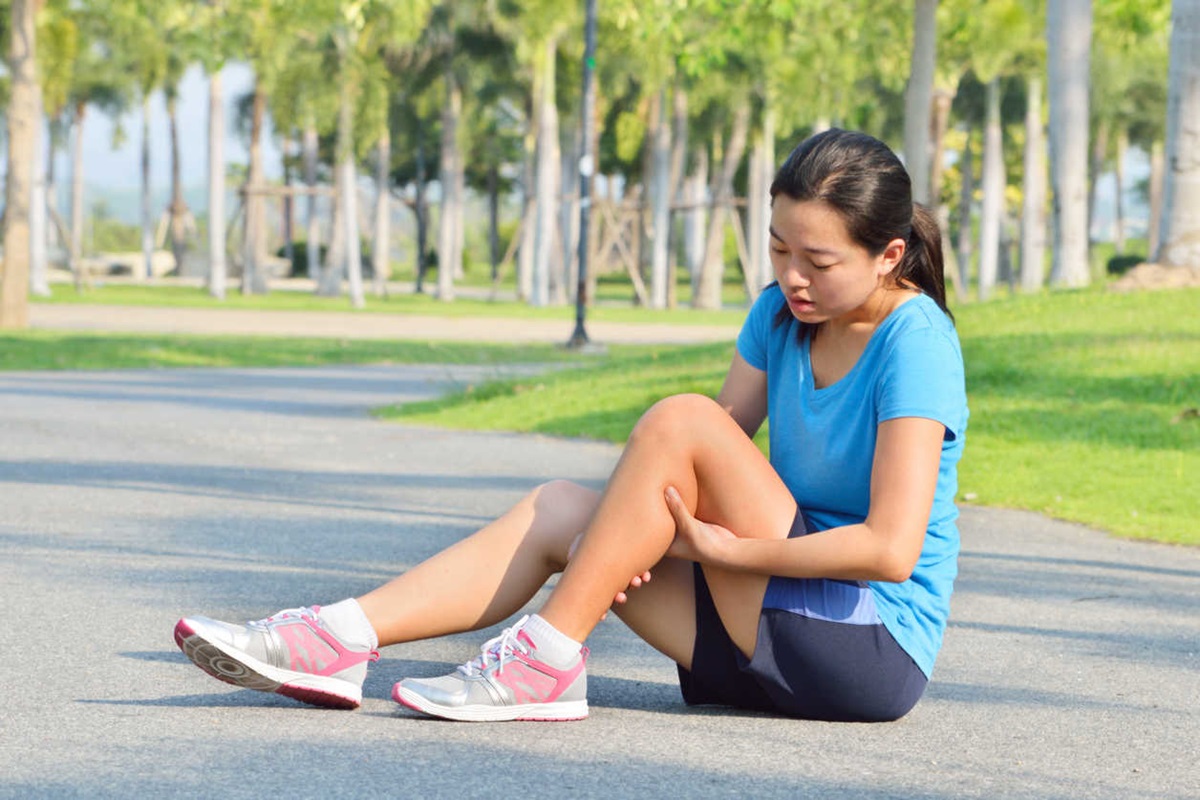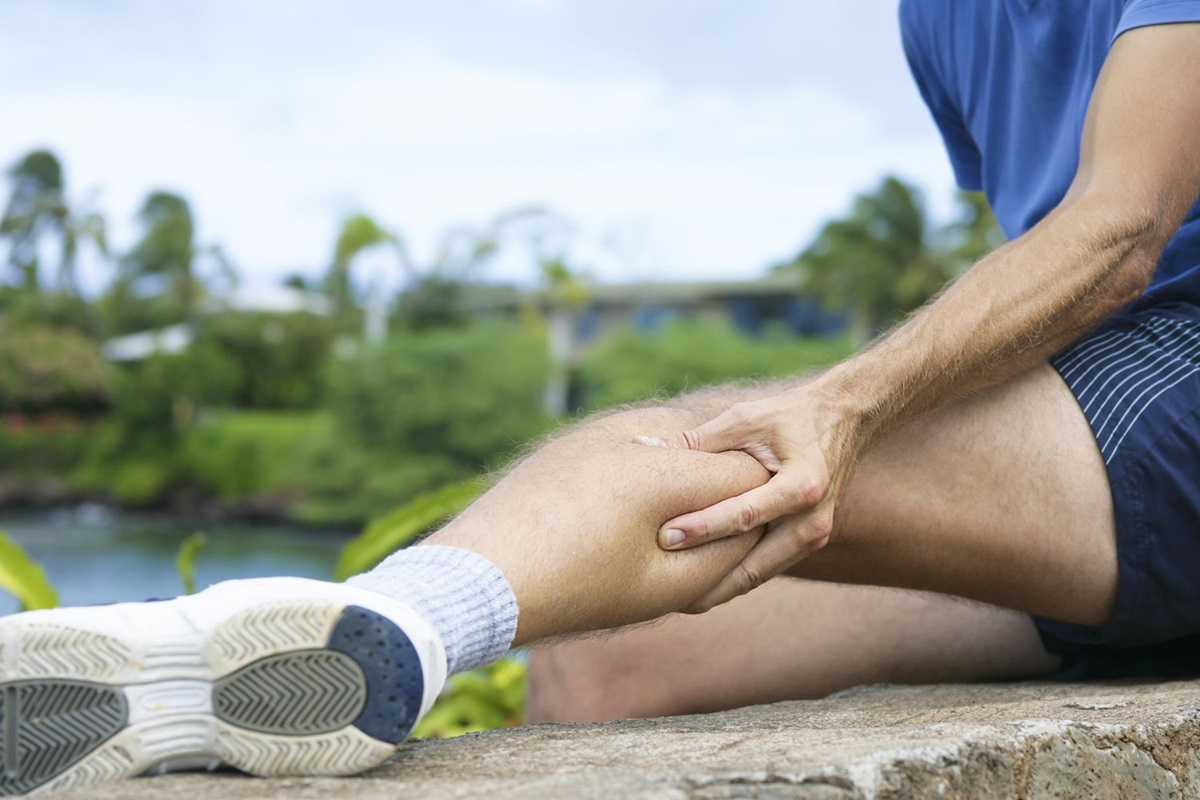Calf pain is common, but it isn’t always something to brush off. Whether it happens suddenly or lingers over time, knowing when to worry about calf pain can help you avoid serious health risks. This guide will help you understand the causes of calf pain, spot red flags, and learn what you can do for relief, recovery, and prevention through physical therapy for calf pain.
Understanding Calf Pain Fundamentals
Calf pain can be a mild nuisance or a sign of something more serious. From sports injuries to nerve-related conditions, understanding the root cause is essential to get proper treatment. This section breaks down how the calf works, why pain happens, and what symptoms you should pay attention to.
Anatomy of the Calf: Gastrocnemius, Soleus & More
Your calf consists of the gastrocnemius and soleus muscles, both critical for mobility and stability. The gastrocnemius helps with explosive movements like jumping, while the soleus plays a key role in balance and posture. Damage to these muscles, whether from a calf strain, overuse, or a direct contusion, can trigger significant calf pain and movement restriction.
Acute vs. Chronic Pain: Timeline and Triggers
Acute pain tends to result from sudden injuries like a lower leg fracture or calf injury, while chronic pain often signals underlying issues such as varicose veins, restless legs syndrome, or poor musculoskeletal alignment. Repetitive stress without adequate stretching before and after exercise can worsen the situation. Understanding whether your symptoms are acute or chronic can help determine when to worry about calf pain.
Calf Pain vs. Cramp: What’s the Difference?
A muscle cramp feels like a sudden, tight knot and usually resolves in minutes, while persistent calf pain could be from achilles tendonitis, baker’s cyst, or neurogenic claudication. Dehydration, poor hydration, and overexertion often trigger cramps, while deeper muscle injuries or vascular issues cause ongoing pain. Knowing the source helps guide whether self-care, stretching, or physical therapy is needed.
Warning Signs – When Calf Pain Is Serious
Not all calf pain is minor. Some symptoms point to serious medical problems like deep vein thrombosis (DVT) or compartment syndrome. Learn the signs that tell you exactly when to worry about calf pain and act fast.
Sudden, Intense Pain or “Pop” Sensation
An audible pop followed by sharp calf pain may indicate a torn gastrocnemius or achilles tendon injury. Often referred to as “tennis leg,” this injury needs rest and potentially a musculoskeletal ultrasound scan to confirm. This is clearly when to worry about calf pain and Speak with a PT immediately.
Swelling, Redness, Warmth or Skin Discoloration (DVT/PAD)
Clinical studies suggest that approximately 1 in 10 patients presenting with symptoms of a calf pull may actually be experiencing deep vein thrombosis (DVT). This condition poses a serious health risk and should not be overlooked. Distinguishing between muscular injuries and vascular issues is critical for safe and effective treatment.
Swelling or redness of the skin, sudden extreme swelling, and skin discoloration could point to deep vein thrombosis or peripheral artery disease (PAD). These are vascular emergencies. A fever greater than 100°F may accompany DVT and signals immediate need for a physical examination and labs and imaging tests.
Inability to Bear Weight, Muscle Weakness or Numbness
Trouble with foot flexion, weakness, or numbness suggests nerve involvement such as sciatica or nerve entrapment. These symptoms also appear with compartment syndrome, which reduces blood supply to the calf. It’s critical to know when to worry about calf pain in these cases and avoid delays in treatment.
Persistent Pain Without Improvement (10+ Days)
If calf pain persists for more than 10 days, even after using methods like the RICE method, heating pads, or stretching-based corrective exercises, professional help is needed. This could be due to hidden structural damage, chronic vascular issues, or poor healing from a calf strain. Backcountry Physical Therapy can offer a full evaluation and recovery plan.
Common Causes of Calf Pain
Many factors contribute to calf pain, and knowing the exact cause helps guide treatment. This section outlines key issues, from strains to vascular disease and nerve conditions.
Calf Strain & Tears (“Tennis Leg”)
Calf strains are among the most frequently treated injuries in both general medical and sports-focused clinics. These injuries often result from overstretching or overuse of the calf muscles, particularly during physical activity. Early identification and proper management are key to preventing long-term complications and speeding up recovery.
A calf strain happens when muscle fibers tear from overstretching or overuse. Pain, swelling, and bruising are common symptoms. The term “Tennis Leg” refers to a tear in the gastrocnemius and is more common in athletes. Managing calf strain recovery time properly with rest, stretching-based corrective exercises, and therapy improves outcomes.
Muscle Cramps & Overuse Injuries
Muscle cramps are usually caused by dehydration or poor circulation. Overuse injuries occur when the calf doesn’t recover properly after intense activity. Regular calf stretches, good hydration, and gradual training build resilience and prevent strain.
Peripheral Artery Disease and Vascular Compromise
Peripheral artery disease (PAD) restricts blood flow to the lower legs, causing pain while walking or during exertion. Other signs include claudication, skin discoloration, and cold feet. PAD requires a full vascular assessment and often benefits from therapy and compression stockings.
Neurological Causes: Sciatica, Nerve Entrapment
Sciatica and neurogenic claudication cause radiating pain into the calf from the lower spine. These may be misdiagnosed as muscle issues without a physical examination and appropriate testing. Addressing musculoskeletal alignment through corrective exercises and posture correction helps relieve symptoms.
Compartment Syndrome and Other Serious Conditions
Compartment syndrome develops when pressure builds up in the calf, cutting off circulation and nerve supply. It can result from trauma, surgery, or intense overuse. If unaddressed, it can cause permanent damage, highlighting when to worry about calf pain immediately.
Calf Strain Recovery Time & Realistic Timelines

Knowing the expected calf strain recovery time helps set goals and avoid re-injury. It also tells you when to be patient and when to take further action.
Grade I–III Strains: Severity and Expected Healing
- Grade I: Mild pain and tightness, improved with light stretching and rest in 7–10 days.
- Grade II: More fibers involved, with swelling and bruising; expect 2–4 weeks to heal with physical therapy for calf pain.
- Grade III: Complete tear, usually requires imaging and may take 6–8 weeks or longer with rehabilitation. A timely diagnosis using a musculoskeletal ultrasound scan helps define the correct calf strain recovery time.
Recovery Phases: Rest, Rehab, Return to Activity
Recovery is not one-size-fits-all. Here are the key stages:
- Rest and protection: Use compression bandage, elevation, and ice pack for swelling.
- Rehab and mobility: Start calf stretches, balance work, and corrective exercises.
- Strength rebuilding: Add heel raises, resistance bands, and core work.
- Activity return: Progress slowly, using protective equipment and shoes when needed. These steps minimize reinjury and ensure a shorter and safer calf strain recovery time.
When to Suspect Surgical Intervention
If there is no improvement after 6 weeks, or symptoms like a visible gap or loss of function exist, surgical options may be needed. Labs and imaging tests can confirm if a complete tear or nerve damage is present. Always Speak with a PT to discuss your options early.
Immediate Relief – Calf Stretches & At-Home Care
Immediate relief is possible using evidence-backed home strategies. Whether it’s a fresh strain or tight muscles, these methods ease pain and speed up healing.
Calf Stretches for Instant Relief
Effective calf stretches include wall push, step stretch, and towel stretch. These improve circulation, reduce tension, and help reset muscle tone. Do 2–3 rounds daily and pair with stretching before and after exercise.
RICE Protocol and Contrast Therapy
The RICE method – Rest, Ice, Compression, Elevation – is a classic approach to reduce inflammation. Add contrast therapy (hot/cold alternation) after the first 72 hours for chronic calf pain or swelling. Avoid prolonged ice exposure; wrap ice packs in cloth to prevent skin irritation.
OTC Pain Relief: When and How to Use Safely
Over-the-counter options like acetaminophen, ibuprofen, and naproxen sodium relieve swelling and ease pain. Always follow directions and consult your provider if using beyond a few days. Combine medication with massage, heating pads, and light movement for the best effect.
Role of Physical Therapy for Calf Pain
When home care isn’t enough, physical therapy for calf pain offers guided recovery. A trained therapist can uncover hidden causes and prevent the issue from becoming chronic.
In-Depth Assessment to Find Root Cause by PT
Therapists use a physical examination, movement tests, and sometimes musculoskeletal ultrasound scans to pinpoint pain sources. These findings guide treatment that targets the root problem, not just symptoms.
Hands-On Techniques: Mobilization, Dry Needling
Manual therapy, dry needling, and soft tissue work reduce tension, improve circulation, and restore range of motion. These are especially useful after injury or for long-standing calf pain.
Strengthening and Flexibility Exercises
PTs use a range of exercises such as calf stretches, heel raises, and core work. These correct imbalances and improve stability. Adding stretching-based corrective exercises lowers the chance of reinjury.
Return-to-Sport Protocols & Monitoring Progress
A customized return plan based on sport, goals, and pain levels ensures you come back stronger. Ongoing assessments and progress checks help reduce calf strain recovery time and build confidence.
Best Practices to Prevent Recurrence
Even after recovery, daily habits make a huge difference. Prevention strategies keep calf pain from coming back and allow you to stay active.
Proper Warm-Up, Cool-Down & Load Management

Always warm up with dynamic stretches and end workouts with static calf stretches. Slowly increase your activity levels, avoiding sudden spikes in intensity. These habits prevent overload injuries and strain.
Supportive Footwear and Biomechanical Corrections
Choose shoes that support your foot type and avoid excess strain. Consider protective equipment and shoes during sports. A PT can correct movement issues through corrective exercises and posture work.
Maintenance Stretching and Progressive Strength Training
Keep stretching daily, especially the calves and hamstrings. Add resistance gradually using heel raises, balance drills, and core exercises. These habits help maintain alignment and shorten future calf strain recovery time.
Why Choose Backcountry Physical Therapy
When pain doesn’t go away, trust the team at Backcountry Physical Therapy. With one-on-one sessions and athlete-focused care, we help you return to what you love.
Expert Team with One-on-One Hour-Long Sessions
Each client gets full attention from a licensed therapist. Our hands-on approach and deep knowledge deliver results.
Tailored Treatment for Outdoor Athletes & Active Lifestyles
We know how to treat hikers, runners, skiers, and weekend warriors. Your plan will match your goals and sport.
Transparent Pricing, 24-Hour PT Support & Proven Results
Know your costs upfront. Plus, enjoy unlimited check-ins and questions through our Speak with a PT support line.
Conclusion
Understanding when to worry about calf pain helps prevent serious conditions and speeds up recovery. From the first twinge to full return, the right care makes all the difference. Let Backcountry Physical Therapy guide your next step with confidence.
FAQs
Is it a calf strain or blood clot?
A calf strain usually follows activity and presents with soreness, swelling, or a “pop”. A blood clot or deep vein thrombosis includes swelling or redness of the skin, warmth, and possibly a fever greater than 100°F. If you’re unsure, get checked immediately.
How long is too long for calf pain?
Any calf pain lasting over 10 days despite using the RICE method and OTC treatment needs professional evaluation. It could signal a more serious issue like compartment syndrome or a vascular problem.
How to know if a calf strain is serious?
Watch for swelling, bruising, weakness, or inability to walk normally. A gap in the muscle or prolonged pain suggests a Grade II or III strain. These are signs when to worry about calf pain and seek a PT or imaging.



